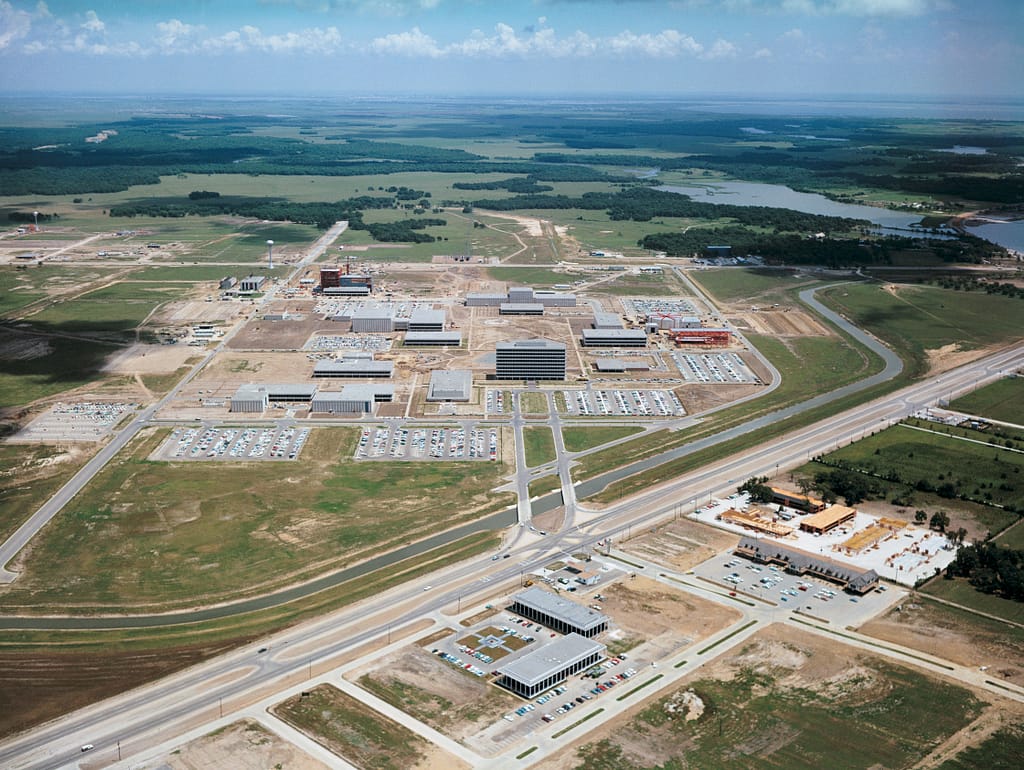The Birth of Mission Control: Houston Becomes the Center of Space Exploration
In 1961, Houston was selected as the home for NASA’s Manned Spacecraft Center – a decision that changed the course of history. This facility, later renamed the Johnson Space Center, became the nerve center for America’s efforts to explore the unknown. The heart of these operations was the Mission Control Center, a place where engineers, scientists, and astronauts worked tirelessly to accomplish some of humanity’s greatest achievements.

The decision to build Mission Control in Houston was strategic. The city offered access to top engineering talent and proximity to both the military and industries supporting space exploration. From the beginning, Mission Control wasn’t just about technology – it was about teamwork, problem-solving, and the relentless pursuit of knowledge.

“Houston, We Have a Problem”: Defining Moments in Space History
Mission Control in Houston has played a critical role in every major American space mission, earning its place in history. Perhaps its most famous moment came during the Apollo 13 mission in 1970 when the crew’s survival depended on the problem-solving skills of the ground team. When astronaut Jack Swigert uttered the now-iconic words, “Houston, we have a problem“, the world held its breath.
In those tense hours, Mission Control orchestrated one of the most remarkable rescue efforts in history. Engineers on the ground developed innovative solutions to critical technical problems, ensuring the safe return of the astronauts. This episode became a testament to the importance of collaboration and quick thinking – qualities that remain hallmarks of NASA’s operations to this day.
Another groundbreaking achievement was the Apollo 11 mission in 1969, when Mission Control guided Neil Armstrong and Buzz Aldrin safely to the lunar surface. Armstrong’s first words after landing – “Houston, Tranquility Base here. The Eagle has landed” – marked a monumental moment not just for the United States, but for all of humanity. These missions solidified Houston’s reputation as the city that connected Earth to space.
Innovation and Legacy: The Shuttle Program and Beyond
During the 1980s and 1990s, Mission Control adapted to support the Space Shuttle program, ushering in a new era of space exploration. The shuttle missions carried astronauts, satellites, and space station components into orbit, expanding the possibilities of human activity beyond Earth. With each mission, the center in Houston demonstrated its ability to manage complex operations in real-time, coordinating communication between astronauts and engineers seamlessly.

A major milestone came with the construction and ongoing operation of the International Space Station (ISS). Mission Control in Houston manages the station’s systems, conducts experiments, and ensures astronaut safety, working in tandem with international partners. The ISS represents humanity’s commitment to peaceful collaboration in space, with Houston continuing to lead these global efforts.

Houston’s Mission Control in the Modern Era: Leading the Way to Mars
As NASA looks to the future, Mission Control remains at the forefront of space exploration. Current plans include the Artemis program, which aims to return astronauts to the Moon as a stepping stone for future missions to Mars. The knowledge and experience accumulated over decades at Mission Control will be vital as humanity embarks on its most ambitious journey yet – landing astronauts on the Red Planet.

In addition to its role in crewed missions, Mission Control also supports robotic explorers like the Mars rovers. By managing communications and guiding these robots across alien landscapes, the Houston team continues to push the boundaries of what’s possible. This dedication ensures that Houston will remain a global leader in space exploration for generations to come.

How Mission Control Changed the World
The work done at NASA’s Mission Control has had profound effects beyond the space industry. Many of the technologies developed to support space missions – such as advanced computer systems, medical devices, and communication networks – have become part of everyday life. The lessons in leadership, teamwork, and crisis management learned in Houston have also influenced industries around the globe.
The Mission Control Center symbolizes more than just space missions – it embodies the spirit of exploration and innovation. Through moments of triumph and challenge, Houston’s Mission Control has shown the world what humans are capable of when we aim high and work together. Whether it’s saving astronauts stranded in space or charting a path to Mars, the legacy of this iconic center continues to inspire future explorers.